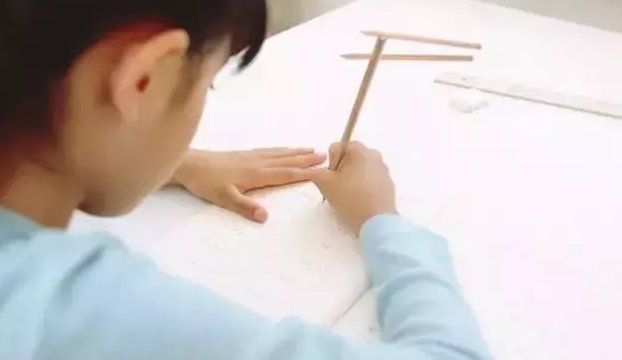How do primary school students practice calligraphy? How to practice calligraphy more effectively? The best way for primary school students to practice calligraphy is to cultivate their good writing and study habits. This can avoid many detours and allow children to grow into good students with all-round development.

Interest is the best teacher. If a child likes calligraphy and practicing calligraphy, it will naturally save a lot of effort and will have good results over time. But the actual situation is that 75% of children have no interest in writing. There may be many factors for this. When children first start to learn to read, parents’ wrong guidance is the most important factor that causes children to be disgusted with calligraphy. So how can primary school students practice calligraphy more effectively?
1. Create a strong learning atmosphere
Why was there a saying in ancient times about "a scholarly family"? If you were born in a scholarly family and have a strong learning atmosphere, you will naturally learn knowledge much faster and more effectively. In modern society, let alone whether you are a scholarly family and want your children to practice calligraphy and study better, at least allocate an independent study room for your children. Maybe you have heard that many people play mahjong in the living room or in the mahjong room. There are examples of studying at the table and getting good test scores, but think about it, does your child have that kind of talent? After all, there are only a few people like that, and besides, you don’t know when people are studying hard. So if possible, allocate a study room for your child and give him a quiet learning environment!
2. Correct sitting posture and pen holding posture
Don't underestimate the pen holding posture, because it is related to whether our eyes are healthy and not myopic. According to the latest research from the Department of Otolaryngology, Zhejiang University, incorrect pencil holding posture is also a major cause of myopia. Among our common incorrect writing postures, the distance between the finger and the tip of the pen is too close, and the tips of the thumb and index finger are crossed. These incorrect pen holding postures are another factor leading to myopia.
3. Use your brain frequently
You should carefully remember the glyphs, structures, and strokes. When you read for a long time, summarize more and engrav the glyphs deeply in your brain. Whenever you mention this word, you can immediately think of it on the copybook. shape. Be sure to have a clear mind and a clear mind. Which Chinese characters are similar, which strokes are common among which fonts, and which radicals are used in different proportions in which fonts? All need to be summarized, and summarizing will make us progress faster.
4. Practice often
The purpose of using the brain is to figure out how to write the words. The mind can think of the best effect of the words, but the hand may not be able to write the best effect, because the brain may not be able to direct the hand, and the hand may not be able to direct the pen. . Practicing hands is to achieve the state where mind and hand are consistent, and hand and writing are consistent, so practicing hands is also crucial. Hand training mainly involves practicing finger strength, wrist strength and hand feel. If you write for a long time, your fingers will hurt, your wrists will become sore, and your hands will not obey the instructions. This phenomenon will disappear if you exercise more. Students who often help teachers copy questions on the blackboard and students who write blackboard newspapers often write quickly and well. Their finger and wrist strength are developed in this way.
5. Practice structure
Because the key to practicing calligraphy is to master the structure of characters. The structure of a character refers to the length ratio of the strokes of the character and the interpenetrating and avoiding relationships between the strokes. "Fangfangzhengzheng" summarizes the structural characteristics of Chinese characters. After mastering the structure of Chinese characters, you can write square and beautiful boldface characters. By slightly changing the strokes, you can write Song style, Wei style, regular style, imitation Song style, etc. Chinese characters in various fonts such as Pang style, Sima style, official script, etc. Therefore, mastering the structure of characters is the key and foundation for practicing all fonts well.
6. Practice strokes
Words are composed of strokes and strokes. Even if you have done well in the previous works, if you have not practiced the strokes well, the dots are not dots, the horizontal lines are not horizontal, and the vertical lines are not vertical, you will not be able to write good fonts, so you must practice boldface. To write, you must grasp the shape of the characters and practice strokes diligently. The common strokes are dot, horizontal, vertical, left, fold, back, hook, and pick.
The practice is not aimed at large quantities, but each word must be written accurately. From practicing proficiently in strokes and strokes, to having reasonable structure, from writing one word to writing several lines, the most important thing is persistence. Even if you write one page every day, it is better than two pages every other day.
Calligraphy practice questions are published by 15 Calligraphy Practice Network. Please indicate when reprinting: https://www.seowhy15.com/a/356.html








